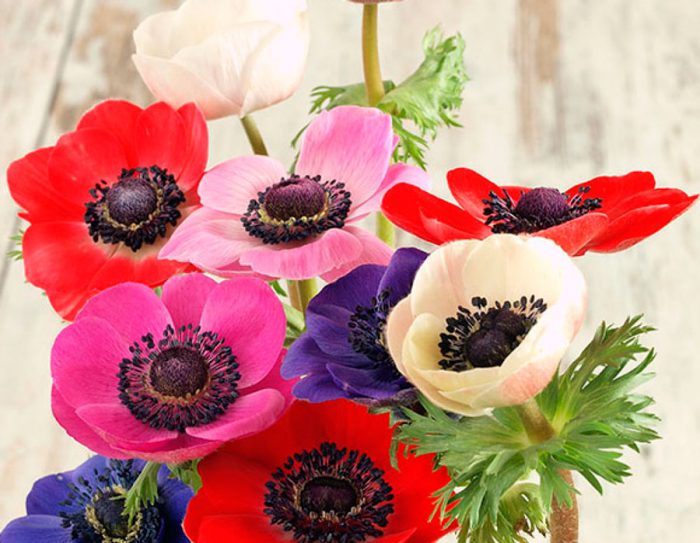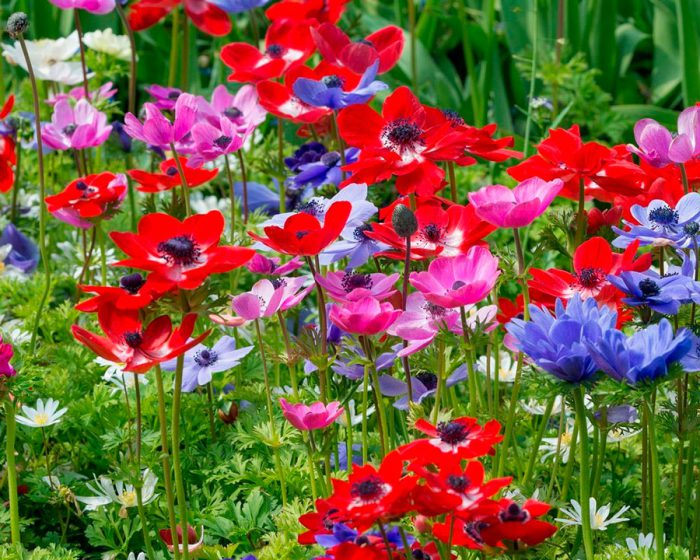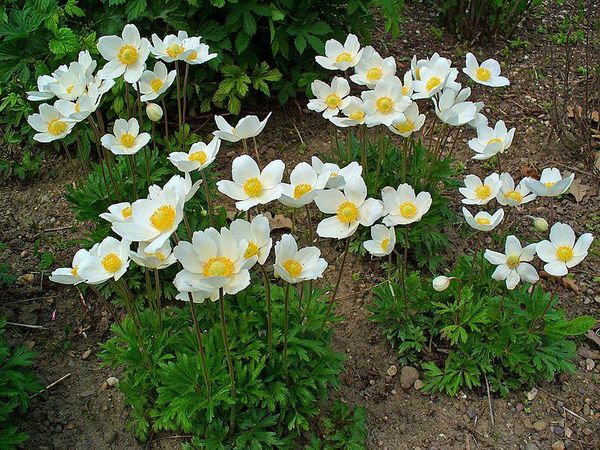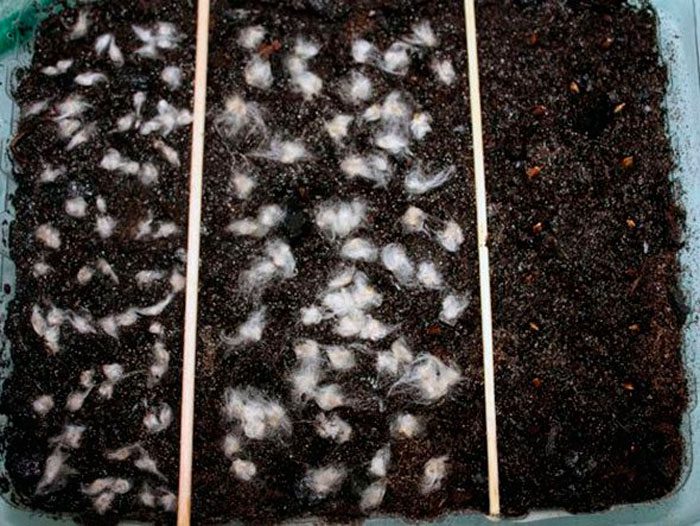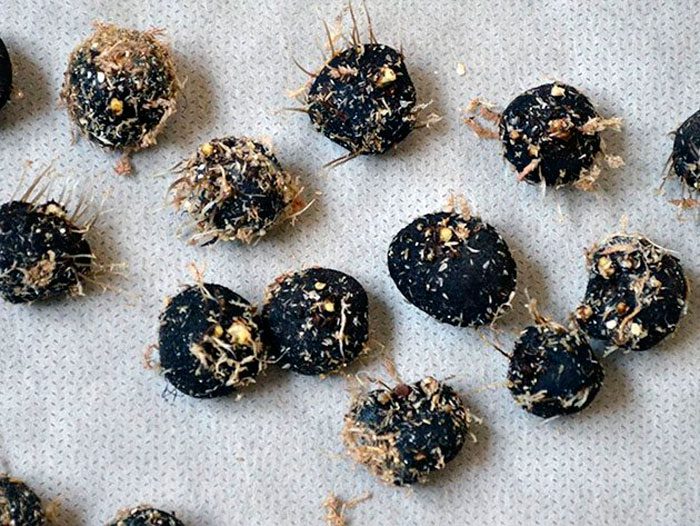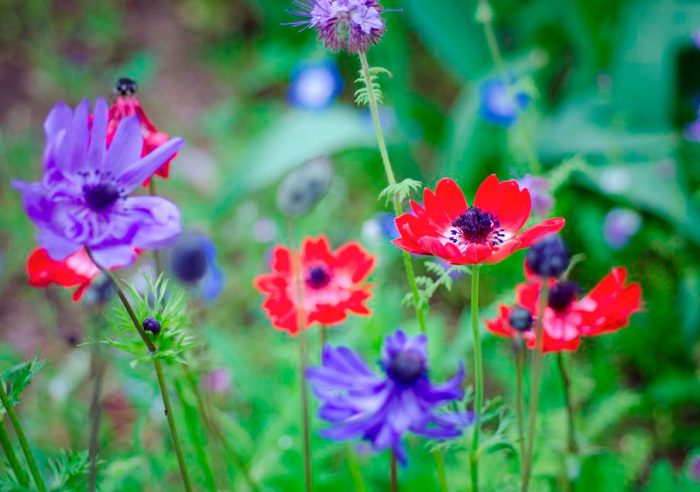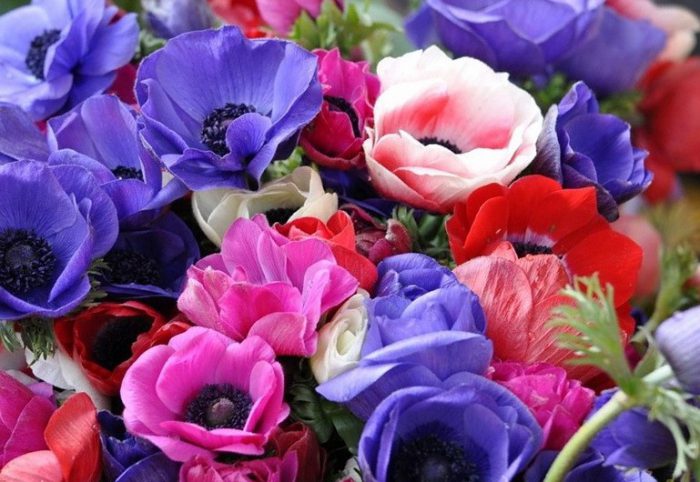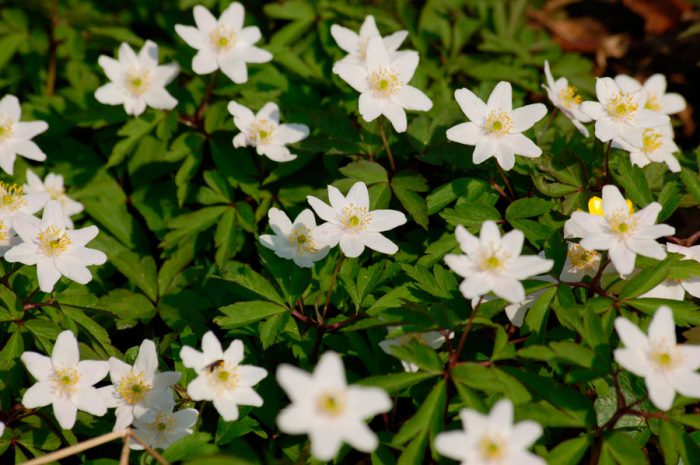The name of the plant anemone (Anemone), or anemone comes from the Greek word, which means "daughter of the winds". The fact is that even from the slightest gust of wind, the petals of such a plant begin to flutter. This herbaceous perennial is a member of the Buttercup family. In nature, it can be found in regions with a temperate climate of both hemispheres, while it prefers to grow in mountainous areas and on plains. There are about 160 species that bloom in different ways and at different times, which is why even growers with considerable experience are often confused.
Content
Growing features
There are a large number of species and varieties of anemones, while some of them are unpretentious to growing conditions, while others, on the contrary, should be provided with special care. And the thing is that some species are tuberous, while others are rhizome. It is the rhizome species that are distinguished by their unpretentiousness and ease of care, while the tuberous ones can suffer greatly if they are not properly looked after. There are several features of growing such a flower that you need to know:
- In dry and very hot weather, they must be watered.
- In autumn, flowers should be fed with complex mineral fertilizers, and organic matter should be introduced into the soil before planting and in the process of active growth or flowering.
- To prevent the plants from freezing, in winter they should be covered with a layer of fallen leaves.
- The easiest way is to propagate this plant by seeds, while they are sown before winter, or by root suckers in spring.
Preparing for planting anemone
How to prepare the ground
Before proceeding with the direct planting of the anemones, you should find the most suitable site, and also prepare the ground. A suitable area should be spacious, in partial shade and protected from drafts. A strongly growing rhizome is very fragile, even contact can harm them. In addition, excessive heat, as well as a draft, can harm these flowers. The soil should be loose, nutritious and well-drained. The best option is deciduous soil or loam with peat. To make the soil loose, ordinary sand should be poured into it.If the soil is acidic, then this can be corrected by adding wood ash or dolomite flour.
How to prepare seeds
When growing anemones from seeds, it must be remembered that they have extremely low germination. About ¼ of the seeds can germinate, and they must be freshly harvested. To increase the percentage of seed germination, they must be stratified, they are placed in a cold place for 4–8 weeks. To do this, combine the seeds with peat or coarse sand (1: 3), the mixture must be abundantly moistened. Then it is sprayed with water every day to keep it moist all the time. After the seeds are swollen, they must be combined with a small amount of the substrate, everything is well mixed and abundantly sprayed with water. Then the seeds are harvested in a well-ventilated room, where it should not be warmer than 5 degrees. A few days after the sprouts appear, the bowl with the seeds must be transferred to the yard, where it is buried in snow or in the soil, the surface is sprinkled with straw or sawdust. At the very beginning of spring, transplant the seeds into boxes so that they germinate. If you don't want to mess around with growing anemones, then in the fall, sow the seeds in containers filled with loose soil. Then the boxes should be buried in the yard, while on top they are covered with cut branches. In winter they will undergo natural stratification. In springtime, seeds should be removed from the ground and planted.
Preparing anemone tubers
Before planting anemone tubers, they should be awakened from sleep. To do this, they are immersed in lukewarm water for several hours to swell. Then they are planted in pots filled with a moistened substrate consisting of sand and peat, they need to be buried only 50 mm. The potted substrate must be systematically moistened with moderate moisture. Also, before planting, the tubers can be "soaked", for this they are wrapped with a cloth, which is abundantly moistened with an epin solution and put in a polyethylene bag, where they must stay for 6 hours. The tubers prepared in this way can be immediately planted in open soil.


Watch this video on YouTube
Planting anemones in open ground
Planting anemone tubers in open soil is relatively easy, but it is imperative to determine the growing point. If the tubers are pre-processed and allowed to swell, then the buds of the buds will become clearly distinguishable, thanks to this you can understand how to plant them correctly. If there are doubts about the location of the growing point, then it should be borne in mind that the top of the tuber is always flat, therefore, they must be planted down with the sharp end. If the tuber has a non-standard shape, then it must be planted with the side.
The depth of the pit should be about 0.15 m, and its diameter should reach 0.3–0.4 m. One handful of wood ash and humus should be poured into the hole, then the tuber is placed in it. It is covered with soil, which is tamped a little. The planted tubers need abundant watering.
Planting anemone seeds
Seedlings should be planted, which have at least two true leaf plates. Seedlings are planted in open soil in light shade in the second year of growth. When planting in autumn, the surface of the site must be covered with foliage or branches. The first flowering of an anemone, which was grown from seeds, will come only after 3 years.
When planting tubers or seeds, given the timing, it is quite possible to ensure that the flowering of these plants lasts from April to November. To do this, you need to purchase various varieties, then they are planted at the recommended time for each of them.
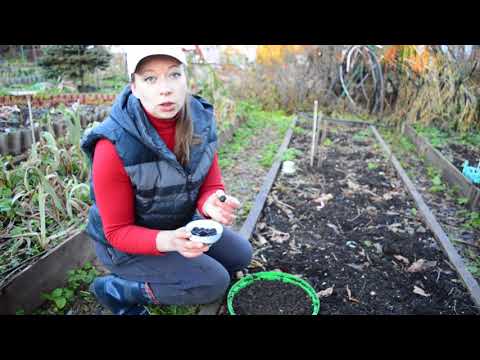

Watch this video on YouTube
Anemone care
Taking care of an anemone is very simple. The most important thing is to ensure the correct moisture level throughout the growing season. If the soil is waterlogged, then rot may appear on the roots, which will lead to the death of the entire bush.If there is not enough moisture, especially during the formation of buds, then this will negatively affect the growth and flowering of the plant. To achieve the optimal level of humidity, such a flower must be planted on a hill, while the site must have good drainage. It is recommended to cover the surface of the area with planted anemones with a layer of mulch (peat or leaves of fruit trees), its thickness is about 50 mm.
Watering
In springtime, such flowers need to be watered once every 7 days. If it rains regularly in the summer, then you do not need to water the anemones, except for the crown anemones when it blooms. If it is dry and hot in the summer, then watering is carried out every morning and evening after the sun sets.
Top dressing
During the flowering period, such a plant should be provided with organic feeding (you cannot use only fresh manure). And in the fall, you need to feed them with complex mineral fertilizer. If all the necessary fertilizers were added to the soil during planting, then there is no need to feed the anemone at all.
You should also systematically loosen the soil and pull out weeds, while a hoe cannot be used for weeding, since there is a risk of injury to the fragile system of flower roots.
Diseases and pests
This plant is resistant to disease. Snails or slugs can settle on the bushes. They must be picked by hand and the plants themselves are sprayed with metaldehyde. Sometimes leaf nematodes or caterpillars of the scoop (winter worm) settle on the bushes. Bushes infected with a nematode must be dug up and burned, the soil on the site must be replaced.
Anemone breeds
Such a flower can be propagated by dividing the rhizome, seeds, tubers, or dividing the bush. How to grow an anemone from seeds and propagate with tubers is described in detail above. To divide the rhizomes in the spring, they must be removed from the soil and divided into parts, the length of which should be 50 mm. Each section should have a kidney, they are planted in loose soil, placed horizontally and buried only 50 mm. Such anemone will be fully mature only after 3 years. If the plant is 4 or 5 years old, then it can be transplanted with the division of the bush.
After flowering
When growing anemones in mid-latitudes in the fall, they need to be dug up and prepared for wintering. For dried tubers, it is necessary to remove the aerial part, then they are buried in sand or peat and stored in a cool dark room, for example, in a non-damp basement. If it is assumed that there will be no frost in winter, then the flowers can be left in the soil. For this, the surface of the site must be covered with a thick layer of loose leaves or covered with spruce branches, which will save the plants from frost.
Types of anemone with photos and names
Both in natural conditions and in culture, a fairly large number of species and varieties of anemones grows. Below is a description of the most popular of them.
All types of flowering time are divided into spring and autumn (summer). Spring species are distinguished by their elegance and variety of colors, while they are painted in pastel colors, for example: cream, blue, snow white, pink, lilac, etc. There are terry varieties.
Spring species are ephemeroids with very short aerial flowering cycles. They wake up in April, amicable flowering is observed in May, while in July they begin a dormant period, while the foliage of most species does not fade until autumn.
Also, anemones are divided according to the type of rhizome, for example, tender anemone has a slow-growing tuberous rhizome, and oak and buttercup anemone has a jointed rhizome, which is distinguished by its fragility.
Anemone blanda
Such a miniature plant reaches a height of only 5 to 10 centimeters. The most popular varieties are: Blue Shades (blue), Charmer (pink), White Splendor (white).
Anemone nemorosa (Anemone nemorosa)
This species is relatively low in popularity among mid-latitude gardeners. The bush reaches a height of 0.2 to 0.3 m. Simple flowers have a diameter equal to 20–40 mm, as a rule, they are painted white, but there are varieties whose flowers have lilac, blue and pink colors. There are terry varieties. The main feature of this species is its unpretentiousness.
Buttercup Anemone (Anemone ranunculoides)
This unpretentious species also has terry varieties. The bush reaches a height of 20 to 25 centimeters. The rich yellow flowers are somewhat smaller than those of the oak anemone. This species can be grown in almost any soil.
Autumn (summer) anemones include the following types: anemone japanese (Anemone japonica), anemone hybrid (Anemone hybrida) and crown anemone (Anemone coronaria).
Most often these are large perennial plants with a well-branched powerful root system. Flowering is observed from the last summer weeks to mid-autumn. The flowering of the crown anemone is observed twice per season: in the first summer weeks and in autumn. Autumn species have slender and powerful peduncles, which reach 0.8–1 m in height, and several dozen semi-double or simple flowers of various colors are located on them. The most popular varieties of crown anemones are:
- anemone de caen - simple single flowers of various colors;
- Mr Fokker - the color of the flowers is blue.
Terry anemone has varieties such as Lord Jim with blue flowers and Don Juan with deep red flowers. Popular varieties of hybrid anemones are: Honorine Jobert - white flowers, slightly pink below; Profusion - semi-double flowers, dark purple color; Queen Charlotte - semi-double flowers of a deep pink color. The most popular are the following varieties of Japanese anemones: Pamina - large double flowers are painted in a dark pink, almost burgundy color; Hadspen Abundance is a tall, cream-colored plant; Prinz Heinrich - deep pink semi-double flowers.


Watch this video on YouTube

